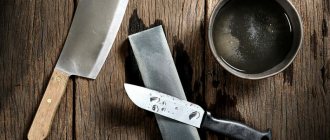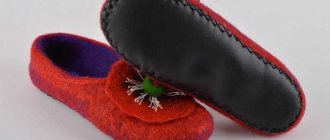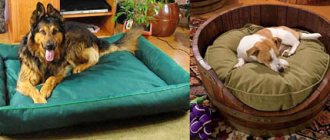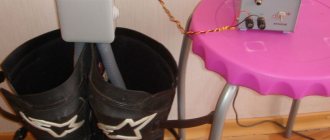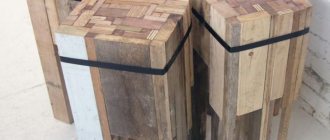Poultry meat has a high nutritional value and is easily digestible. And eggs are an excellent, healthy product. The natural process of a bird incubating eggs is quite long and eventually several chicks appear.
Incubators are used to increase productivity. On the site you will find detailed descriptions of how to make an incubator with your own hands from available materials in order to always get fresh meat and eggs for yourself and for sale.
The device is a box with artificially created conditions for incubating eggs, like a bird in natural conditions, and producing young birds.
Industrial designs are expensive, so people's ingenuity has found many options for creating incubators with their own hands at home from a variety of materials, without investing significant funds.
You can choose a design from the proposed options, or use the idea to implement your own project. Products are divided according to the number of simultaneous bookmarks into:
- Industrial. They have a capacity of up to several thousand;
- Farm, with 1000 eggs laid;
- Household, designed for 30-150 chicks.
The main differences are the automaticity of the incubation process. This includes regulation of temperature, lighting, and humidification. Devices designed for large quantities of eggs are equipped with automatic sensors that monitor the condition inside the devices.
When do you need a homemade incubator?
A DIY incubator will be an excellent solution if:
You need much more chickens or other poultry than are naturally produced. It’s really not worth waiting for a sufficient number of chicks to hatch. It is very unstable, and there is almost never a large brood. A do-it-yourself incubator is an opportunity to increase it to the required number.
I plan to have poultry, but I don’t want to buy chicks. This is also a common reason for thinking about creating a homemade incubator. It can be cheaper than buying chicks, especially if used annually.
There is an intention to breed chicks or ducklings for sale. From this you can make either a small part-time job or a profitable seasonal business. And it doesn’t matter at all whether for this purpose the incubator was made with your own hands at home or purchased in a store. The main thing is that it works properly.
What should the humidity be?
Humidity control systems solve another important problem. With their use, a balance is achieved between the air flow from the fans and the level of evaporation of liquid from the container installed inside the chamber. Automation can easily provide an indicator of 40-60% at the beginning of incubation, 80% in the main period until hatching starts, and again reduce the humidity to 55-60%, when most of the chicks are ready for collection.
The values for the average egg aging periods for different breeds of poultry are as follows:
- chickens the first 6 days 65%, up to the 11th day inclusive 50%, up to 20 days 75%, the last two days 80%;
- ducks 75, 60, 60, 90% respectively;
- geese 70, 70, 70, 90%;
- turkeys 55-65, 45-55, 55, minimum 70%.
A simple humidity regulator in a homemade incubator is a shut-off air duct. By moving the damper, air flows out of the chamber. It carries away excess moisture. The humidity controller can be automated. Today there are quite a few ready-made solutions on the market, some of which even work by spraying water.
Types of incubators
Incubators are divided into the following types:
- Industrial. Designed for thousands of eggs, sometimes hundreds of thousands.
- Farmer's. From 100 to 1000 eggs.
- Household. Quite simple models that almost anyone can handle. You just need to understand the instructions, remember to monitor the temperature and turn the eggs according to the schedule. Usually designed to hatch up to hundreds of chicks.
Features of types of incubators
In addition to the number of eggs, different types of incubators also differ in design, size and degree of automation.
Industrial ones would be extremely difficult to maintain if only manual labor had to be used. Household ones, on the contrary, are becoming more expensive due to automation, which is inconvenient for buyers.
If you plan to breed chickens for sale, a farm model within a house or apartment is sufficient. But even a household one will do: many people use several incubators at once, which allows them to receive a hatch every few days, on schedule.
Automated models of modern incubators
Manufacturing companies use modern technologies that automate part of the work, take the necessary measurements and make adjustments. Using such systems you can regulate:
- humidity;
- degree of ventilation;
- turns.
Gas analyzers and sensors on eggs are also used. All this allows you to work automatically, setting up the device once and checking it periodically.
You can make a home incubator for eggs with your own hands, but it will be difficult to implement an automatic system. However, most people can create a regular household model.
Home incubator: the main thing
The first step is to determine the dimensions of the future structure. To do this, a decision is initially made on where it will be convenient to place it. This step is especially important when you plan to keep the incubator just in the apartment.
The basic structure of the device is as follows:
- A specially designed box, designed in size for the required number of eggs.
- Dishes for water at the bottom. This is necessary in order to regulate the air humidity in the device.
- Tray with eggs. Must be secured so that they are at a height of about 15 cm from the bottom. In store-bought household incubators, the height of the eggs is lower, but for homemade ones it is better to provide for a more significant rise.
- Sensors in the center. Necessary for temperature control, you can also install other, additional ones. It's good if there are humidity sensors.
- Heat source. You need something that will heat fairly evenly. For incubators, a heating circuit is often used; you can also use an incandescent lamp. It is fixed on the lid from the inside, at a height of about 20-25 cm from the eggs.
- Holes. They should be on the bottom and on the lid. This is done to ensure good ventilation of the incubator. The holes should not be large. About 1-2 cm in diameter will be enough.
This is just a basic, basic diagram that superficially shows how everything should be arranged. As you can see, the system is quite simple, but it needs to be done as correctly as possible.
Note!
- Do-it-yourself charger for a car battery: a step-by-step guide for making the device at home, selecting materials for assembling the structure
- DIY laboratory power supply | Step-by-step instructions on how and from what elements to build a power supply
DIY antenna for digital TV - photo instructions on how to make simple antennas for digital TV
Homemade models can also be different: for example, with a heat source placed in a separate chamber. You can even build an incubator with your own hands with automatic turning: it all depends on how much time and effort you don’t mind spending on creating this system. The following describes the options for creating the device.
What you need to know about sizes
DIY grain crusher
It is necessary to calculate in advance the size of the homemade device; the parameters depend on the volumes that the farm is targeting and the number of eggs that will be laid one time. It is the second factor that plays a decisive role.
An incubator with average dimensions of 450x300 (length and width) can accommodate approximately the following amount of incubation material:
- goose eggs - 40 pieces;
- turkey (duck) - 55 pieces;
- chicken - 70 pieces;
- quail - 200 pieces.
The dimensions will also be influenced by the heating system option, the location of the lamps and the materials used for manufacturing.
The size of the incubator depends on the number of eggs that will be laid one time
Nuances, pros and cons of homemade incubators
Before you start creating an incubator with your own hands, you need to evaluate your strengths and weigh the pros and cons. It is important to understand that all rules are critical. Even a deviation of 1-2 degrees for a short time will kill the embryos.
Also, each bird has its own conditions for incubating eggs. It is necessary to immerse yourself in the topic, study, apply, and avoid mistakes.
Advantages of a DIY incubator:
- Cheap if most of the materials are already in stock. For example, many people have them somewhere in the garage, others may take them from work.
- You can independently plan the size, capacity, shape.
- Universal, suitable for eggs of any poultry.
- If the result is successful, they work stably and for a long time, and the owner will understand his device, and if it breaks down, he can easily fix it.
Flaws:
- Can get expensive if you buy all the parts. Much depends on the prices of the chosen store.
- Requires modifications and adjustments to the required parameters. Perhaps the result will be obtained through trial and error, wasting time and money.
- Fire hazard in case of incorrect assembly and mistakes.
Note!
- DIY induction heater - instructions on how to make a simple and powerful heater
- Do-it-yourself sound amplifier: selection of materials and tools for making at home + step-by-step instructions for creating and assembling yourself
- Do-it-yourself wind generator: step-by-step instructions for making a device at home, choosing materials and type of construction
It’s worth making an incubator with your own hands at home if you have absolute confidence in your abilities, and if you need it more than once.
Cardboard box incubator
This option is the simplest, and this is its advantage. The downside is the difficulty of maintaining the desired temperature. This design must be carefully monitored.
Materials you will need:
- Cardboard box. A size of 50 cm on all sides or so will do.
- 4 sockets with 4 incandescent lamps, the power of which is 40 watts.
- Cable 2-3 meters.
- Voltage regulator.
- Temperature sensor.
- Fan. Need a slow speed model.
- Humidity sensor.
- Screws and boards.
First day of hatched chicks
On the first day of hatching, the chicks are placed in cardboard boxes with newspaper placed at the bottom. Since the chickens are accustomed to warmth, they need to be provided with the same conditions for some time. If necessary, place a table lamp in the box.
Fabric bedding is not used because chickens easily become entangled in it. In the first days of life, young animals are fed a hard-boiled egg at the rate of half an egg per head per day.
In addition to food, chickens constantly need clean, warm water. Starting from the third day, boiled millet, cottage cheese, and crackers are introduced.
Step-by-step production of a box incubator
How to do it - step by step:
- The box is covered with any material. It is preferable that it be waterproof: any type of film will do.
- Seal the lid with polystyrene foam.
- Make holes 2 cm in diameter at equal distances from each other on the lid and on the bottom.
- At the bottom you need to place parallel connected lamps and a fan, containers with water.
- The egg tray should be installed 25cm above the bottom. Sensors for measuring temperature and humidity should be kept in this area of the incubator.
- The egg tray is made according to the size of the box. You can use wooden slats as a material, then they are covered with a fine mesh or fabric that easily allows air to pass through.
- If you need to quickly turn the eggs, you can create a roller system that allows you to start the movement by pulling the mesh under them. Don’t worry that they will turn over unevenly: the chicken doesn’t make marks either.
- You will need to install a voltage regulator that will control the heat.
The disadvantage of the design is poor heat retention and the likelihood of overheating. Such an incubator needs more monitoring than, for example, a foam incubator.
For those who need to make an incubator with their own hands at home, the video will be useful. It will be easier to implement your plans with him.
Note!
- Do-it-yourself cyclone: methods for assembling the device at home, preparing materials and tools + step-by-step instructions
- Do-it-yourself subwoofer: types of devices, functions, methods of assembly and installation at home + step-by-step instructions and diagrams for beginners
- DIY Bluetooth speaker - step-by-step master class on making and installing it yourself, necessary materials and tools
Automatic heating system
It is extremely important to position the heating elements correctly in a fanless incubator. In different homemade incubators they are placed in different ways: under the eggs, above the eggs, on top, on the side or even around the perimeter.
The distance from the eggs to the heating element directly depends on the type of heater. For example, if light bulbs are used, then the distance should be at least 25 cm, and if you choose nichrome wire as a heating element, then 10 cm is enough. Drafts should not be allowed, otherwise the entire brood will die.
Thermostat and electrical circuit of the device
For the development of the embryo inside the egg, it is necessary to observe a certain required temperature regime, which must be maintained with an absolute error of half a degree.
This error consists of the temperature difference across the surface of the tray with hatching eggs and the error in maintaining the temperature of the device by the thermostat.
You can use bimetallic plates, electric contactors, and barometric sensors as a heat regulator.
Comparative description of homemade thermostats
- Electric contactor . This is a mercury thermometer with an electrode soldered into the tube. The second electrode is a column of mercury. During heating, mercury moves through a glass tube and, reaching the electrode, closes the electrical circuit. This is a signal to turn off the incubator heating.
- Bimetallic plate . The cheapest, but also the most unreliable means of heating an incubator. The principle action is that when the plate is heated with different temperature expansion, it bends and, touching the second electrode, closes the circuit.
Styrofoam incubator
Household-type incubators that are commercially available are often made of polystyrene foam. Therefore, this option is quite viable, and there is no doubt about it. The main advantage is ease of manufacture.
What you will need:
- Foam boxes.
- Wooden blocks – 4 pieces.
- A socket and a matching light bulb. The power must be selected based on the size of the box.
- Humidity and heat sensor.
- Fabric through which air passes well.
- Screws.
- Hacksaw for metal.
- Scotch tape or tape.
- Photo frame with glass.
- Water container.
- Construction stapler.
Components
A household incubator consists of:
- A frame made of wooden beams and covered with sheets of plywood, less often metal;
- Thermal insulation. Typically, polystyrene foam is used, which fills the box from the inside. You can use other types of insulation, but polystyrene foam can be called the most economical choice;
- Heating elements. Most often, lamps are used that are located in the lid, bottom of the chamber, or around the tray. Less commonly you can find a heater made of nichrome wire. The distance from the light bulb heaters to the tray should be at least 25cm, from the wire - 10cm;
- Humidity controller. Its role is played by a factory-made psychrometer;
- Thermostat. Let's talk about this element separately.
Step-by-step production of a foam incubator
How to make an incubator with your own hands from polystyrene foam - step by step:
- We measure the dimensions of the foam box.
- A frame is made from the bars to the size of the box. It should turn out to be slightly higher than the container that was chosen for water.
- On one side we cover the frame with prepared fabric and secure it. Ideally - with a stapler, but you can also use small thin nails.
- One wall of the box needs to be drilled - make a small hole for the light bulb socket.
- The socket is inserted into this hole and the light bulb is screwed into it. It must be installed so that it does not come into contact with the foam!
- You will also need 2 more holes in the walls of the box, and 4 in the lid. They should be small, approximately 1.5 cm in diameter.
- You need to cut a window on the lid into which the glass will be inserted. This is necessary to observe what is happening inside without opening the incubator again.
- Next, the photo frame is disassembled, inserted and reassembled. It turns out to be a glass window.
- A water container is placed at the bottom of the box. You can fill it right away.
- The previously created “screen” is installed on top of it - a frame covered with fabric. It will allow the water to evaporate freely, while at the same time the eggs will not touch the bottom or container.
- Next you need to install the humidity sensor, thermometer and close the lid.
At this stage, the homemade DIY incubator is ready for use. He cannot turn the eggs on his own, but you can do it yourself 2 times a day, which is not at all difficult.
It is required to maintain a temperature of 37.5-38.5 for 21 days. To do this, you need a thermostat so that the light bulb turns off when it overheats.
The options described above are simple. You can implement them yourself. How effective are they? The experience of other people shows that they can be used and produce a brood of chicks. The most important thing is to consistently maintain the optimal temperature. If this rule is followed, this is 80% success.
Egg culling
For a high hatchability rate, preliminary collection and correct egg storage conditions are of great importance.
Store eggs for brood in a horizontal position, turning them over periodically, at a temperature not exceeding 12 degrees and humidity not exceeding 80%.
Eggs with a damaged, thin or rough surface or irregular shape are rejected. Using an ovoscope device, eggs with two yolks, with a large chamber made of air, are set.
should never be washed before being placed in an incubator , because this damages the film over the shell, which has certain properties. Eggs that are too large are also not suitable for incubation.
Monitoring the incubation process begins after 5 days of eggs being in the incubator. The same ovoscope .

